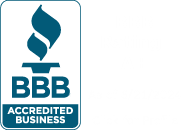In our nonprofit startup series, we’ve been exploring the nonprofit startup checklist step-by-step. Part 1 of the series provided information on initial paperwork for nonprofit startups, filing for tax-exempt status, and filing any necessary state documentation. Part 2 was all about nonprofit marketing and fundraising. In this third and final part of our series, we turn our attention to developing staff, operating your nonprofit, and making sure your nonprofit is compliant with all state and federal regulations. A comprehensive nonprofit startup checklist is included so that you can keep track of each step as you complete it.
Developing Staff for Your Nonprofit
All of the paperwork is filed, the government has approved your tax-exempt status, and you have begun your marketing and fundraising. The next step on your nonprofit startup checklist is staffing your nonprofit.
Volunteers
While many nonprofits will eventually have the funding necessary to hire paid staff members, all will rely on some form of volunteers. In nonprofits of all sizes, volunteers are essential for the organization’s ongoing operations. They provide the time, skills, and labor necessary for the organization to fulfill its mission.
If you want your nonprofit organization to thrive, you need to have detailed plans for recruiting, training, encouraging, and maintaining volunteers. Volunteers who feel under-utilized or under-appreciated may either never come back or, worse, tell their friends and family about their bad experience with your nonprofit.
On the other hand, developing and maintaining a good relationship with your volunteers will help ensure appropriate volunteer staffing over time. Volunteers who are motivated and excited about your organization will work hard. They will also act as free marketing in the community for your nonprofit.
Paid Staff
Initially, the entirety of programming responsibilities will be on the Board of Directors. However, they alone will only be capable of maintaining the nonprofit’s operations for so long. As the organization grows, more people become necessary to carry out the mission. In addition, some roles within an organization require specialized skills, consistency, and training. When you need more people with this kind of skill and training, it’s time for your organization to begin hiring paid staff members.
Like volunteers, organizations need a detailed plan to train and support paid staff members. Additionally, paid staff are often one of the nonprofit’s most significant expenses. You will need to ensure consistent fundraising once your nonprofit hires its first staff person.
Managing payroll for paid staff members is another consideration for your nonprofit organization. You can have a staff member or board member who is designated for your bookkeeping and payroll services, or you can outsource that work.
Staff Appreciation
Regardless of if your staff is volunteer, paid, or a combination of both, it’s essential to appreciate them regularly. Showing appreciation is a vital way to ensure that volunteers and paid staff remain committed to your organization’s purpose. Handwritten notes from the board, spotlights on the organization’s website, or personal words of thanks are great ways to show appreciation for the team.

Nonprofit Operations
At this point, you’ve moved past the initial startup phase and into the nonprofit’s ongoing operation. Making it to this point requires time, dedication, and a highly engaged team. Congratulations on making it to this stage!
All nonprofits require ongoing attention and management, otherwise called governance. The Board of Directors is not the only group responsible for the organization’s daily and ongoing administration. Everyone involved with the nonprofit has a role in the organization’s operation, from the Board to the volunteers.
While not as exciting as marketing or working with volunteers, ongoing governance is crucial for every organization.
Governance requirements include:
- Strategic Plan: Developing a set of shared responsibilities and goals.
- Consultation and Networking: Seeking the advice of others.
- Board of Directors: Ensuring the Board has the tools necessary for ongoing operations.
- Insurance: Protecting the Board, any assets owned by the organization, and mitigating personal liability.
- Policy Manuals: Creating a set of standards and practices for everyone in the organization.
- Annual Reports and Audits: Reporting the organization’s fiscal responsibility.
Part of the organization’s governance includes compliance with state and federal requirements. We’ll address those in the next section.
Annual Compliance
At the end of each fiscal year, nonprofit organizations must comply with year-end reporting at both the state and federal levels. Failure to comply with these requirements can result in penalties, revocation of tax-exempt status, or even having your nonprofit dissolved by the state.

86% of nonprofits surveyed in our research study reported needing help with annual compliance requirements. Our study showed that no matter the organization’s size, compliance provided consistent headaches. One nonprofit participant in our research reported spending 960 hours on compliance in their first year of operation!
There are two levels of annual compliance:
Federal: Filing the 990 tax-return required for nonprofits.
State: Filing a variation of the state documents required when forming.
While not as exciting as carrying out the nonprofit’s mission, annual compliance is extremely important. If your nonprofit fails to remain in compliance it could face severe penalties.
Thankfully, BryteBridge specialists are well accustomed to federal and state reporting requirements and are ready to assist with your organization’s ongoing compliance needs. Visit us to learn about what compliance documents your organization needs and how BryteBridge can help.
Nonprofit Startup Checklist
In this three-part series, we have outlined eight steps in the nonprofit startup process. That’s a lot of very important information. Keeping track of where you are in that process is a key to your success.
When you’re ready to get the support you need to see your vision and your cause come to life, get in touch with us. The most successful people have all had incredible support: let us be yours. Get started today.
To help you keep track of your progress, we have created this nonprofit startup checklist for you. Use this checklist to track your organization’s startup process and record important details in one convenient location. If you’d like a copy of this guide, please download our free EBook.
Organization Name:
Organization Address:
Fiscal Year:
Initial Board of Directors:
President:
Secretary:
Treasurer:
Additional Board Members:
Incorporation:
Date of Incorporation:
Secretary of State File Number:
Registered Agent:
EIN:
IRS Tax-Exempt Status:
Date of Application:
501c Classification:
Date of Tax-Exemption:
Are 990s required:
State Documentation:
Charity Registration Date Field:
State/Sales Tax Exemption Date Filed:
Annual Compliance:
Date 990 is due:
Date annual report is due:
Date first charity registration renewal is due:
Date state/sales tax renewal is due:
Organization Operation:
Directors & Officers Liability Insurance Quote:
Strategic Plan Ordered:
Corporate Sponsorship Ordered:
Date First Donor Appreciation Planned:



